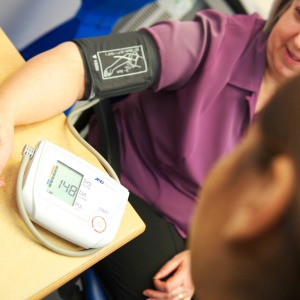Lower cut-off for prediabetes may prevent cardiovascular disease, study finds

A lower cut-off point for defining prediabetes, allowing earlier lifestyle intervention in at-risk patients, may reduce risk of cardiovascular disease or death according to a recent meta-analysis.
The analysis, published in the BMJ, reported that prediabetes was associated with increased risk of both cardiovascular disease and all-cause mortality in patients with impaired fasting glucose levels.
Researchers, based at three Chinese universities, looked at 53 separate studies, totalling information from over 1.6m patients, and found that under both WHO guidelines, which define prediabetes as fasting plasma glucose of 6.1-6.9mmol/L, and American Diabetes Association (ADA) guidelines, with a lower cut off for prediabetes than the WHO of 5.6mmol/L, those with prediabetes had an increased risk of coronary heart disease, stroke and death from any cause.
Since patients are at risk with fasting glucose levels as low as 5.6mmol/L, this research suggests that adjusting the cut off point for prediabetes in the UK, where NICE guidelines define impaired fasting glucose at the WHO-recommended level of 6.1-6.9mmol/L, may allow earlier intervention that could prevent future cardiovascular events in those at risk.
‘Our findings strongly support the lower cut-off point for impaired fasting glucose proposed by the 2003 ADA guideline, and they have important public health implications. According to the 2003 ADA definition, the prevalence of prediabetes in adults was up to 36.2% in the US and 50.1% in China. Considering the high prevalence of prediabetes, successful intervention in these large populations could have major impacts on public health,’ the researchers said.
The team also cited lifestyle modification as the most effective intervention for prediabetes, saying ‘the results indicate that, on the basis of a “snapshot” measurement of blood glucose, prediabetes is associated with an increased risk of cardiovascular disease as well as all-cause mortality, and early lifestyle interventions should be implemented in these populations.’
With Public Health England warning that the rise of type 2 diabetes could be financially catastrophic for the NHS over the next few decades and GPs being urged to identify those at risk of type 2 diabetes under the National Diabetes Prevention Programme, a lower cut off for prediabetes could see more patients undergoing lifestyle interventions that will reduce their risk of cardiovascular events and full blown type 2 diabetes in the future.
Pulse July survey
Take our July 2025 survey to potentially win £1.000 worth of tokens

Visit Pulse Reference for details on 140 symptoms, including easily searchable symptoms and categories, offering you a free platform to check symptoms and receive potential diagnoses during consultations.











